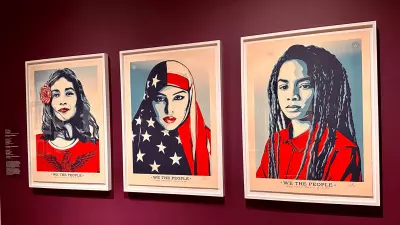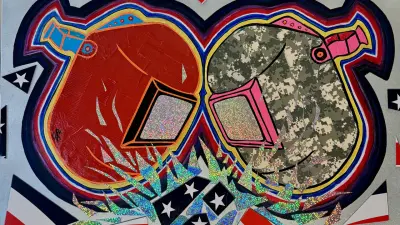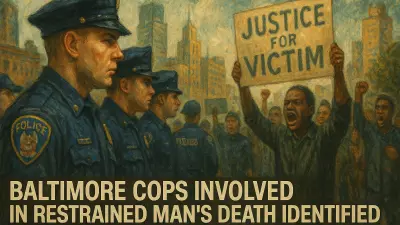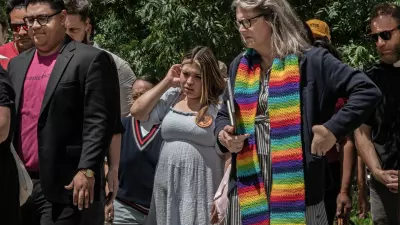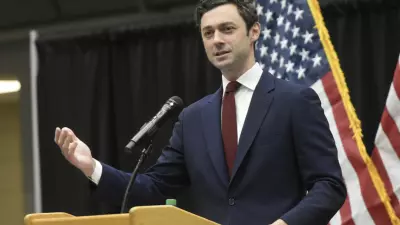During a second Trump turn, federal endowments for the arts will face the distinct possibility of being slashed or completely cut. But as this Postindustrial columnist notes, “art has the power to tell a story and provide perspective,” which even the incoming president can’t destroy.

We are, as a nation, bracing ourselves for the second Trump presidency.
As the founder of a developing arts organization in the Midwest, I am concerned for the future of arts and culture in America, and my fears are not unfounded given how disastrous the first Trump presidency was for arts funding, diversity, and educational programs.
Not only did he issue travel bans that prevented art professionals from entering the country, but he also proposed budget cuts to the National Endowments for the Arts.
Trump has threatened to turn the military on “radical left lunatics” whom he has deemed “the enemy within,” raising concerns about not only arts funding but also freedom of expression and a government supportive of a cultural landscape.
The most recent threat is the HR 9495 bill, which the House just passed and is headed for the Senate, would allow the Trump Treasury Department to strip nonprofits of tax-exempt status and even designate some non-profits as a “terrorist supporting organization” without transparency or appropriate due process.
If passed, this could put outspoken arts organizations at odds with the administration and risk losing their non-profit status.
While some anticipate that his second term could double down on the conservative values that influenced cultural discourse during his first, others argue that a change in approach—perhaps more aligned with nationalistic rhetoric or leveraging the arts for political purposes—could reshape the cultural environment unexpectedly.
The coming years may test the resilience of the arts as both a form of protest and a tool for unifying or dividing the American public. Yet one thing is for certain – art has the power to tell a story and provide perspective.
One show that is doing just that is Power of the People, Art, and Democracy at the Museum of Fine Arts (MFA) in Boston, Massachusetts. While working on newly transformed galleries for the art of ancient Greece, Rome, and the Byzantine Empire, curator Phoebe Segal kept returning to the relevance of ancient Greek and Roman art throughout history. One of the themes she found compelling was Greece’s role in the foundation of democracy, which inspired America’s founding fathers.
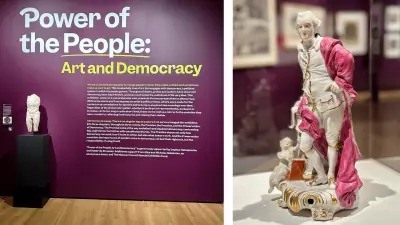
One hundred eighty pieces highlight how art expresses ideas about democracy today and historically. The majority of the pieces are pulled from the MFA’s collection, and a range of items are displayed, from ancient Greek tablets to protest posters from the ’60s to photographs reflecting modern America today.


Though the country’s current focus is on a divided partisan system, the MFA show intended to explore how visual arts have a role in shaping perception and society’s engagement with democracy. The curators intended to reflect on a nonpartisan democracy as a form of government, present historical moments to make sense of current events, encourage visitors to participate in democracy by voting in every election and protect access to voting rights.
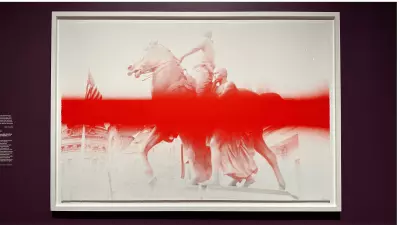
Time will tell how Trump’s second run will directly impact artists and others’ ability to express themselves freely through artwork or a non-profit organization’s mission statement. Yet one thing remains certain: artists will continue to make art, and art will continue to hold the power to disrupt and contribute to political discourse, hopefully serving as an agent for change and awareness.

